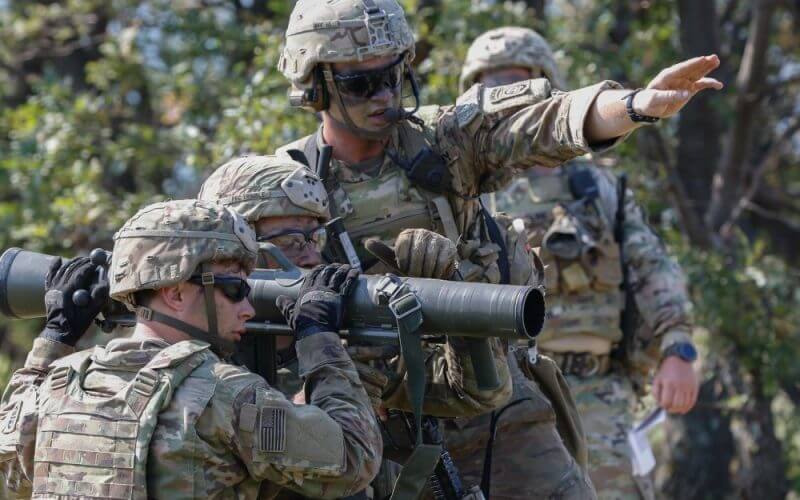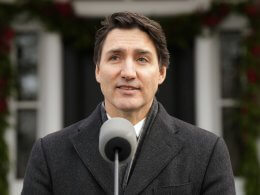A new report compiled by the Heritage Foundation's annual Index of U.S. Military Strength found that the United States military might be helpless to win one war - let alone - two. According to the report, the Pentagon's struggles to keep its forces equipped against potential threats from China and Russia have led to the findings. The latest developments come in light of recent news that adversarial nations such as China, Russia, North Korea, and Iran have recently increased their military capabilities.
The report notes that years of underfunding and "poorly defined priorities" has led the military to become "weak relative to the force needed to defend national interests on the global stage." It further explained that the current U.S. military force is at "significant risk of not being able to meet the demands of a single major regional conflict." Additionally, the military would be unable to do more and is "certainly ill-equipped to manage two nearly simultaneous [major conflicts]."
According to researchers, the possibility of two-front fighting has increased as Russia continues to wage war on Ukraine and China grows increasingly aggressive in the Pacific. Thus, the U.S. military posture can only be rated as "weak," according to the report's conclusions.
The editor of the Heritage Foundation's Index, Dakota Woods, who helped prepare the report, found the results "unsurprising." According to Woods, "this is the ninth in our series, and we have been tracking the gradual downward trend in size (capacity) and readiness of the services for several years. The recruiting environment has been very challenging for the military combined with increased personnel costs, resulting in more downsizing of the forces."
Woods attributes the rising inflation and the general rise in costs for materials as having a "similar effect on training needed for readiness." "The more things cost, the less training can occur unless the defense budget increases accordingly, and that has not happened. So, less training leads to lower readiness rates. So, less training leads to lower readiness rates," said Woods.
The report rated only the U.S. Marine Corps as "strong," given its force capacity, capability, and readiness. However, the Army achieved a "marginal rating," the Space Force and Navy were labeled "weak," and the Air Force bottomed out at "very weak."
Military services continue to prioritize readiness and have seen some improvement over the past few years, but modernization programs in shipbuilding continue to suffer as resources are committed to preparing for the future, "recovering from 20 years of operations and offsetting the effects of inflation," the report said.
According to Woods, "the U.S. military must be able to use all of its capabilities, and each branch is very dependent on the others to provide capabilities essential to winning in battle. As this is not just an ‘in support of matter. Our war-fighting commanders can combine capabilities provided by each service to achieve effects that would not be possible otherwise."
Woods further notes that individuals cannot "predict the when, where, and who of war, so weighting focus on the Navy, for example, which would be essential to operations in the Pacific, would detract from the focus on the Army, which would be a larger player in Europe by comparison. It is not so much an even distribution as an objective as it is a matter of determining how best to have a force that can make the most effective use of all capabilities the U.S. military can bring to bear. Airpower is needed everywhere, while naval and land power varies depending on theater."
"How much effort to apply to each service must result from a review of war plans, operational concepts, and the specific status of various capabilities resident in each service," said Woods.
Several House Armed Services Committee members reacted to the report with dismay, stating that such findings spell serious trouble as the U.S. currently faces nations like China that are rapidly growing and increasing their military capabilities and presence. To strengthen the American Armed Forces, the researchers in the report argue that the U.S. must invest in military hardware like ships, missiles, and other weaponry to supply the force with the equipment needed to prepare for future conflict.
Additionally, experts warn that the Biden administration's diplomacy-first mindset of "substitution of soft power for hard power" is troublesome, given that the proposed budget by the administration fails to help military services regain readiness and replace aged equipment. With midterm elections just around the corner and the rising potential of Republicans to take one or both chambers of Congress, Woods explains that a "change in Congress would not necessarily change these factors for the remaining term of the current Biden presidency.
"Congress would have some leverage in spending authorization and appropriation but spending itself takes a bit of time to be felt in ‘usable’ dollars translated into purchases and spending. The annual NDAA can be a vehicle to require or deny certain policy decisions from the White House, but this is always a negotiated piece of legislation, and it is not clear how it will dramatically change next year if Congress changes hands."
On the issue of woke policies affecting the strength of the military, Woods stated explained that " the reason someone decides not to join the military or decides to leave service can vary between people." However, he emphasized that anecdotal evidence "suggests that 'woke' policies that include critical race theory, an emphasis on ‘diversity’ as a euphemism for preference of race, gender, or ethnicity (as examples), confusion over gender identity, and so forth influence how people in and out of the military view such service."
As a result, a "shrinking military force and attention taken from a focus on war-fighting and competency in tactical skills could be influencing these negative trends, but it is very hard to measure that or to establish a causal relationship," Woods said.
Experts like Woods argue that the problems currently in the military have been "building for 30 years and were amplified by the past 20 years of high use." "The willingness of young Americans to serve is a reflection of societal values and views. Neither of these matters – funding and willingness to serve – will be changed in a brief period. Corrections to the military’s status will take a sustained effort for many years.”
U.S. adversaries China, Russia, Iran, and North Korea are "earnestly and methodically improving their military capabilities. The difference between what they are doing and what we are doing can be seen as risk. We are in a high-risk era and conditions will get worse before they get better," Woods said.










